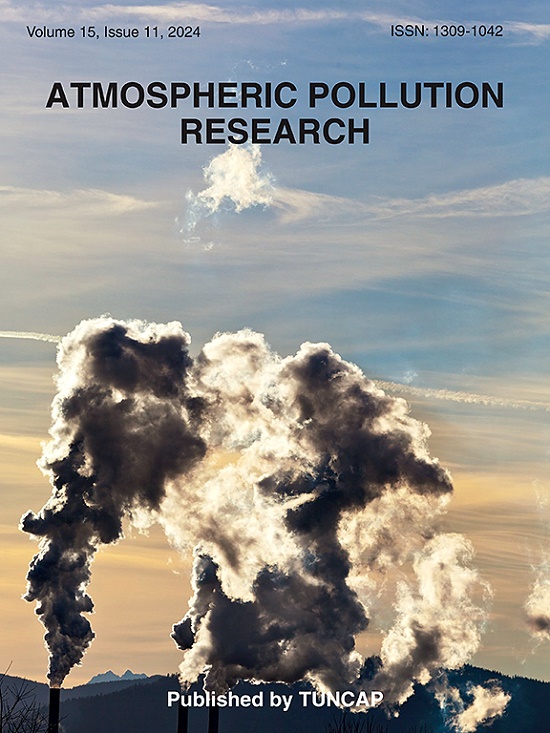Sleep and indoor air quality: an exploratory polysomnographic evaluation of potential associations
IF 3.5
3区 环境科学与生态学
Q2 ENVIRONMENTAL SCIENCES
引用次数: 0
Abstract
This exploratory pilot study examines the potential impact of indoor environmental exposures on sleep quality, with a particular focus on a comprehensive characterization of indoor air quality (IAQ) parameters and their association with sleep architecture assessed through polysomnography. The study was conducted during the cold seasons of 2016 and 2017 with a small sample of 10 subjects from the urban area of Lisbon, Portugal. Polysomnography was performed over two consecutive weeknights, while IAQ monitoring took place over three consecutive nights using typical real-time instruments. Additionally, bioburden was assessed in each bedroom before and after the sleep period using active methods. The analysis was based on correlations between the environmental parameters and the sleep data from these 10 subjects. Parametric and non-parametric statistics were employed to examine potential associations, with a significance level set at α = 0.05. The findings showed that higher bedroom temperatures during sleep were associated with a decrease in REM sleep. Both minimum and mean heart rates (HR) increased with higher levels of CO and CO2, while post-sleep bacteria levels were linked to a decrease in maximum HR. Fungal levels in the bedrooms were associated with a reduction in NREM2, and higher formaldehyde exposure was found to increase REM sleep latency. Exposure to PM2.5 negatively impacted NREM1, RDI, and snoring, while PM10 levels were negatively correlated with WASO and RDI. Although these findings provide a preliminary baseline, they are based on a small sample and may not be representative, highlighting the need for future studies to confirm the effects of various IAQ parameters on sleep quality in a larger and more diverse population.
睡眠和室内空气质量:一种探索性的多导睡眠图评估潜在的关联
本探索性试点研究考察了室内环境暴露对睡眠质量的潜在影响,特别关注室内空气质量(IAQ)参数的综合表征及其与睡眠结构的关联,通过多导睡眠图进行评估。该研究是在2016年和2017年的寒冷季节进行的,从葡萄牙里斯本市区选取了10名受试者作为小样本。在连续两个工作日晚上进行多导睡眠检查,同时使用典型的实时仪器进行连续三个晚上的室内空气质量监测。此外,在每间卧室使用主动方法评估睡眠前后的生物负荷。分析是基于环境参数和这10名受试者的睡眠数据之间的相关性。采用参数统计和非参数统计来检验潜在的相关性,显著性水平设为α = 0.05。研究结果表明,睡眠时卧室温度升高与快速眼动睡眠减少有关。最低心率和平均心率(HR)都随着CO和CO2水平的升高而升高,而睡眠后细菌水平则与最高心率的降低有关。卧室里的真菌水平与NREM2的减少有关,而较高的甲醛暴露会增加快速眼动睡眠的潜伏期。暴露于PM2.5对NREM1、RDI和打鼾有负面影响,而PM10水平与WASO和RDI呈负相关。虽然这些发现提供了一个初步的基线,但它们是基于一个小样本,可能不具有代表性,强调需要未来的研究来确认各种室内空气质量参数对更大、更多样化人群的睡眠质量的影响。
本文章由计算机程序翻译,如有差异,请以英文原文为准。
求助全文
约1分钟内获得全文
求助全文
来源期刊

Atmospheric Pollution Research
ENVIRONMENTAL SCIENCES-
CiteScore
8.30
自引率
6.70%
发文量
256
审稿时长
36 days
期刊介绍:
Atmospheric Pollution Research (APR) is an international journal designed for the publication of articles on air pollution. Papers should present novel experimental results, theory and modeling of air pollution on local, regional, or global scales. Areas covered are research on inorganic, organic, and persistent organic air pollutants, air quality monitoring, air quality management, atmospheric dispersion and transport, air-surface (soil, water, and vegetation) exchange of pollutants, dry and wet deposition, indoor air quality, exposure assessment, health effects, satellite measurements, natural emissions, atmospheric chemistry, greenhouse gases, and effects on climate change.
 求助内容:
求助内容: 应助结果提醒方式:
应助结果提醒方式:


